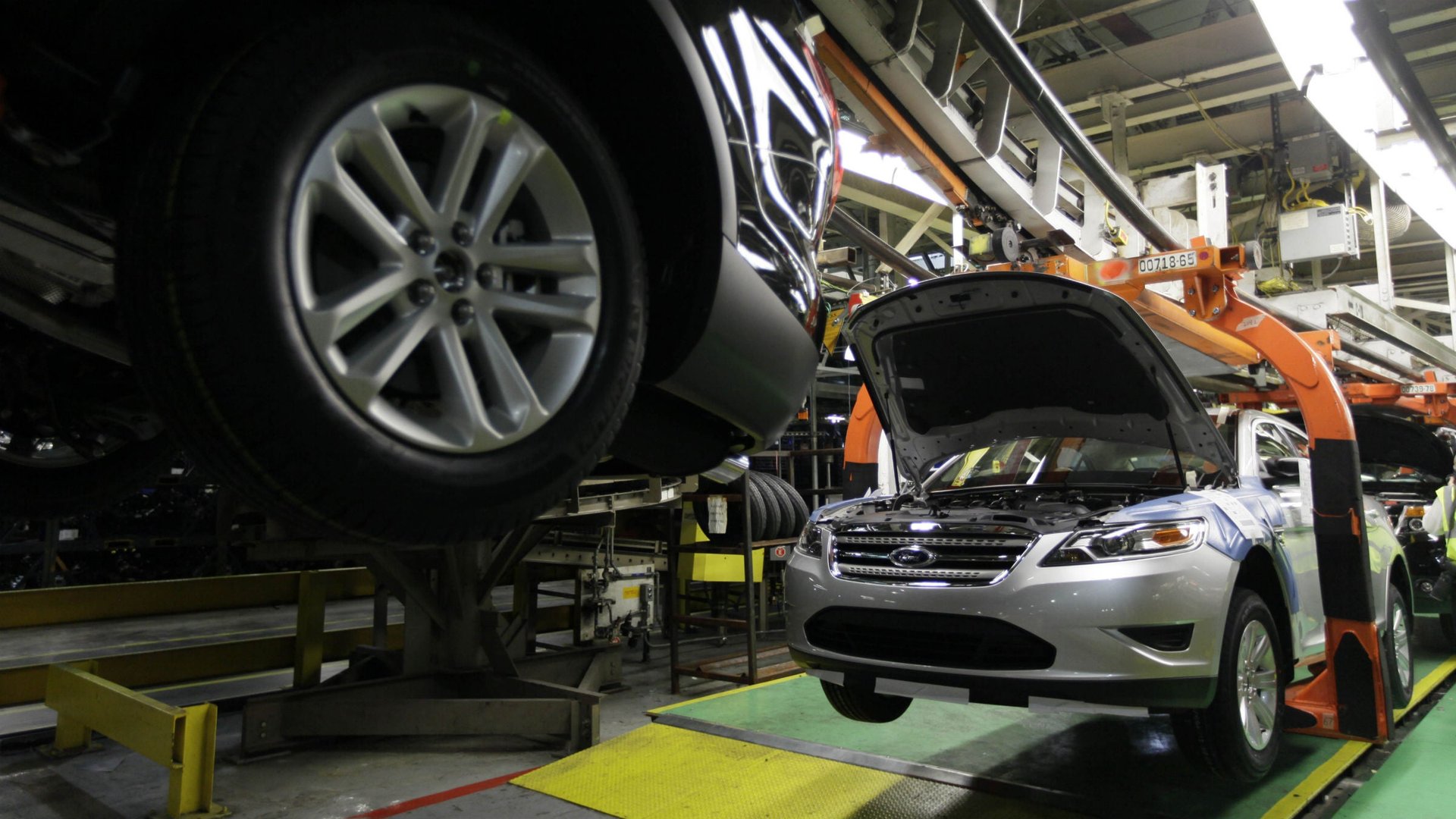A lot of cars on American roads have been recalled—but they didn’t get returned
Earlier this week, Ford announced that it’s recalling 92,000 cars because of a driveshaft problem that occasionally leads drivers to, in the company’s delicate parlance, “experience the loss of drive function.” This comes, of course, on the heels of GM’s seemingly endless chain of recall announcements, which at last count included nearly 26 million cars in the US.


Earlier this week, Ford announced that it’s recalling 92,000 cars because of a driveshaft problem that occasionally leads drivers to, in the company’s delicate parlance, “experience the loss of drive function.” This comes, of course, on the heels of GM’s seemingly endless chain of recall announcements, which at last count included nearly 26 million cars in the US.
But what has gotten lost amid the cacophony of legal teams and testimonies and decades-spanning investigations is the fact that millions of people affected by recalls don’t act on them: roughly one out of every seven cars on US roads, according to Carfax, are recalled but not repaired.
Why aren’t people taking in their unsafe cars? George Hoffer, an automotive economist at the University of Richmond, has been studying recalls for decades, and addressed this question in a 1994 study. The likelihood of a return comes down to three things, Hoffer told me: “First is, the newer the vehicle, the more likely it is to be returned… The second is the more severe the perceived problem, the more likely it is to be returned. And the third one is the ringer: American vehicles are much more likely to be returned successfully than import brands.”
Reason three, Hoffer says, is the one that American car companies aren’t as keen on. Any time you take your car into a dealer, they’ll check and see if there’s a recall open on your car. If there is, they’ll fix it for you. “Since American cars had much worse repair records than foreign-brand cars, the American car would be more likely in the shop. Therefore, if it was in the shop, unwittingly, it was repaired,” Hoffer says. Also, according to Hoffer, older cars are less likely to be taken in because they’re often on their second or third owner, and dealers don’t have their contact information.
We may understand why return rates are so low, but we haven’t increased them. A couple weeks ago, the Times reported that dealers haven’t been able to handle the onslaught of requests for service appointments, and that by mid-June, only 7% of cars with defective ignition switches had actually been taken in for repairs. (GM, for its part, pledges that its repairs will be mostly taken care of by October.) It’s theoretically in manufacturers’ interest to get people to bring their cars in—after all, they’re typically the ones liable for accidents caused by faulty parts, even after notifications have been mailed—and yet they seem to be doing very little to increase return rates.
The federal government has had the power to require manufacturers to recall defective vehicles since 1966, and since then, 390 million vehicles have been recalled (though they haven’t publicized how many of those have actually been fixed). The National Highway Traffic Safety Administration is at least aware that it needs to convert more recalls into repairs: In February, it issued a new, unmissable label that must be affixed to all recall letters mailed to owners.
A prominent label in the mail might help marginally, but Hoffer has in the past suggested a stronger step: rewards. “How do you reward them? Reward them with some free service. Something that’s not intimidating, something anyone can use within 90 days.” In the mid-aughts, Toyota had issued a recall and their return rate was so low, Hoffer says, that “the government was giving them grief.” So they called Hoffer, and he suggested they give out complimentary oil changes when owners brought their cars in. The idea never went anywhere.
Hoffer has another idea, too. “How about using the cigarette technique, where in the letter you actually have a picture of an accident involving that type of vehicle? … Try to scare people. Shock people into action,” he suggests.
I asked about electronic notifications (emails and texts) instead of paper ones, but Hoffer rejected it on logistical grounds. He notes that DMV registrations don’t include email addresses or cell phone numbers, and, further, he worries that owners of older cars are less likely to have cell phones and computers. (That said, Pew reports that 91% of adults own cell phones, so perhaps there is an argument for digitizing these notifications.)
But increasing the return rate isn’t just a matter of inducing owners to bring their cars in—it’s also about changing some of the things manufacturers do that get in the way. Car companies frequently issue recalls that require parts that dealers don’t have (and won’t have for a while). Hoffer mentions that he received a notification about a recall for his Jeep Liberty almost a year ago, but the parts still aren’t in. “It’s a disservice to notify you of the recall and then you don’t have the parts,” he says. The Times reported that some GM owners were sent multiple postcards reminding them to schedule a service appointment, but when they called, they learned that the parts weren’t available.
It’s not clear who needs to change their behavior most. The government could consider changing the way notifications are sent out. Car companies could consider giving out perks to those who bring in their cars. Owners could consider being a little less lazy. And we all could consider taking even a fraction of the attention we pay to recall announcements and directing it toward the processes that help people actually follow through with fixing their unsafe cars.